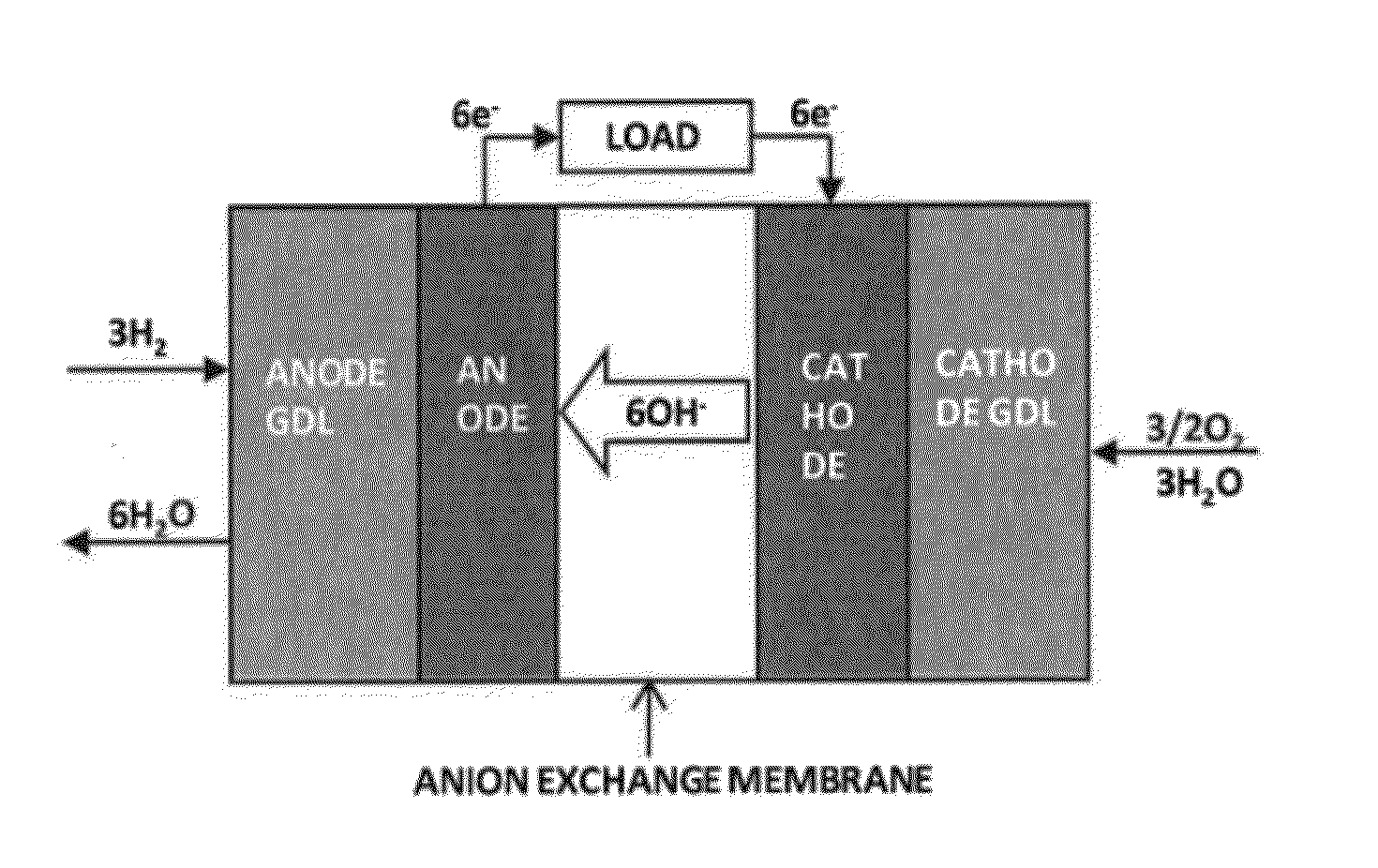Ionomer for alkaline fuel cell
a fuel cell and alkaline technology, applied in the field of alkaline fuel cells, can solve the problems of poor mechanical properties, slow oxidation of liquid fuel, and inferior performance and durability of safcs currently used with safcs,
- Summary
- Abstract
- Description
- Claims
- Application Information
AI Technical Summary
Benefits of technology
Problems solved by technology
Method used
Image
Examples
example 1
[0031]Ionomer preparation: A perfluorosulfonic acid polymer (NAFION®) membrane was immersed in a solution of 1,1,3,3-tetramethylguanidine (TMG) for 2 hours. Then, the membrane was repeatedly soaked in pure water enough to remove excess amine.
example 2
[0032]Ionomer preparation: A perfluorosulfonic acid polymer (NAFION®) membrane was dissolved in a solution of NMP. The solution of 1,1,3,3-tetramethylguanidine (TMG) was added into polymer solution. Then, this polymer solution was cast on a glass plate and dried. The membrane was repeatedly soaked in pure water enough to remove excess amine.
example 3
[0033]Dispersion preparation: An embodiment ionomer is dissolved in a solution containing 2.5 wt percent NMP.
PUM
| Property | Measurement | Unit |
|---|---|---|
| Polymeric | aaaaa | aaaaa |
Abstract
Description
Claims
Application Information
 Login to View More
Login to View More - R&D
- Intellectual Property
- Life Sciences
- Materials
- Tech Scout
- Unparalleled Data Quality
- Higher Quality Content
- 60% Fewer Hallucinations
Browse by: Latest US Patents, China's latest patents, Technical Efficacy Thesaurus, Application Domain, Technology Topic, Popular Technical Reports.
© 2025 PatSnap. All rights reserved.Legal|Privacy policy|Modern Slavery Act Transparency Statement|Sitemap|About US| Contact US: help@patsnap.com



